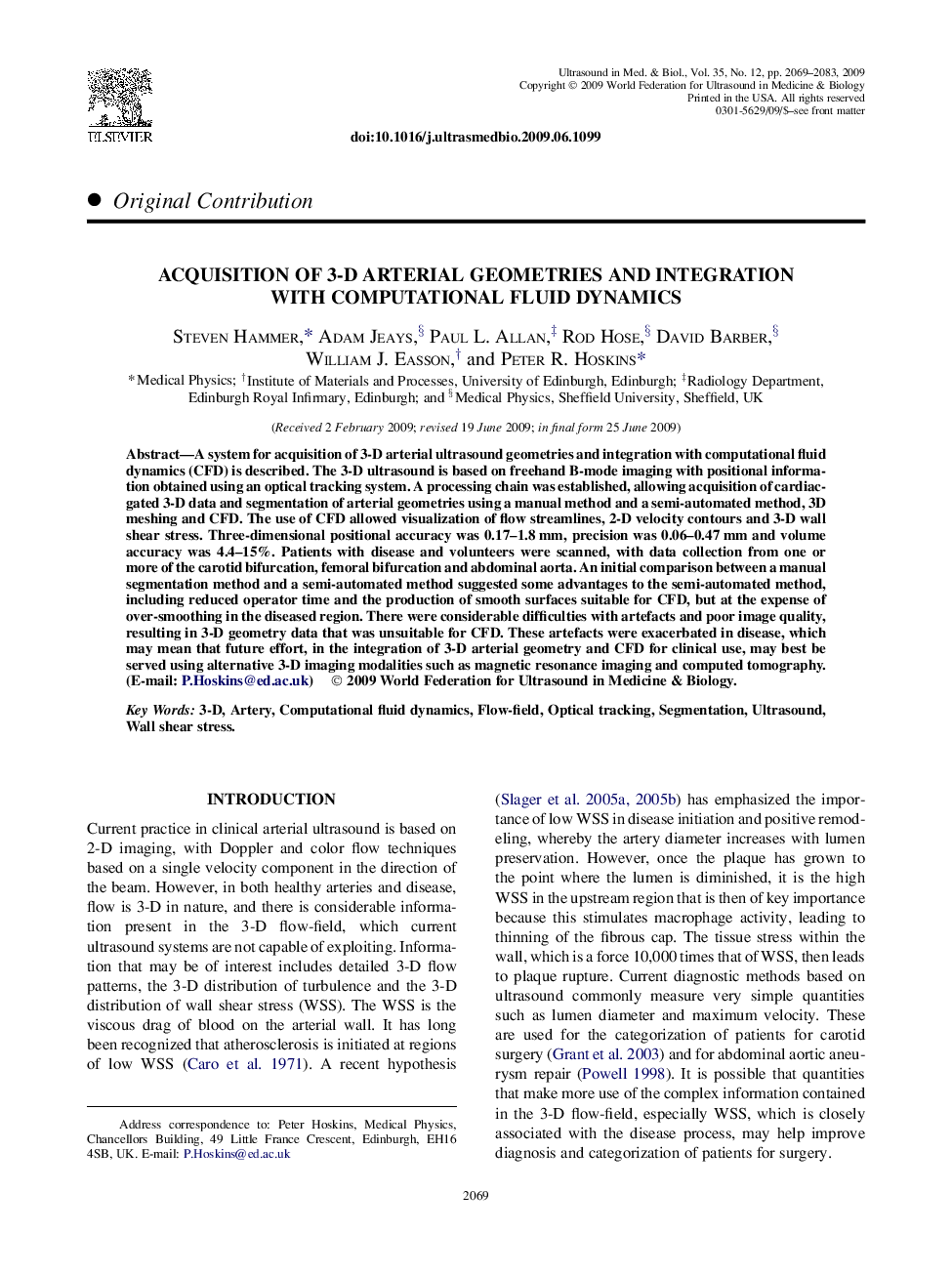| Article ID | Journal | Published Year | Pages | File Type |
|---|---|---|---|---|
| 1762250 | Ultrasound in Medicine & Biology | 2009 | 15 Pages |
Abstract
A system for acquisition of 3-D arterial ultrasound geometries and integration with computational fluid dynamics (CFD) is described. The 3-D ultrasound is based on freehand B-mode imaging with positional information obtained using an optical tracking system. A processing chain was established, allowing acquisition of cardiac-gated 3-D data and segmentation of arterial geometries using a manual method and a semi-automated method, 3D meshing and CFD. The use of CFD allowed visualization of flow streamlines, 2-D velocity contours and 3-D wall shear stress. Three-dimensional positional accuracy was 0.17-1.8Â mm, precision was 0.06-0.47Â mm and volume accuracy was 4.4-15%. Patients with disease and volunteers were scanned, with data collection from one or more of the carotid bifurcation, femoral bifurcation and abdominal aorta. An initial comparison between a manual segmentation method and a semi-automated method suggested some advantages to the semi-automated method, including reduced operator time and the production of smooth surfaces suitable for CFD, but at the expense of over-smoothing in the diseased region. There were considerable difficulties with artefacts and poor image quality, resulting in 3-D geometry data that was unsuitable for CFD. These artefacts were exacerbated in disease, which may mean that future effort, in the integration of 3-D arterial geometry and CFD for clinical use, may best be served using alternative 3-D imaging modalities such as magnetic resonance imaging and computed tomography. (E-mail: P.Hoskins@ed.ac.uk)
Keywords
Related Topics
Physical Sciences and Engineering
Physics and Astronomy
Acoustics and Ultrasonics
Authors
Steven Hammer, Adam Jeays, Paul L. Allan, Rod Hose, David Barber, William J. Easson, Peter R. Hoskins,
